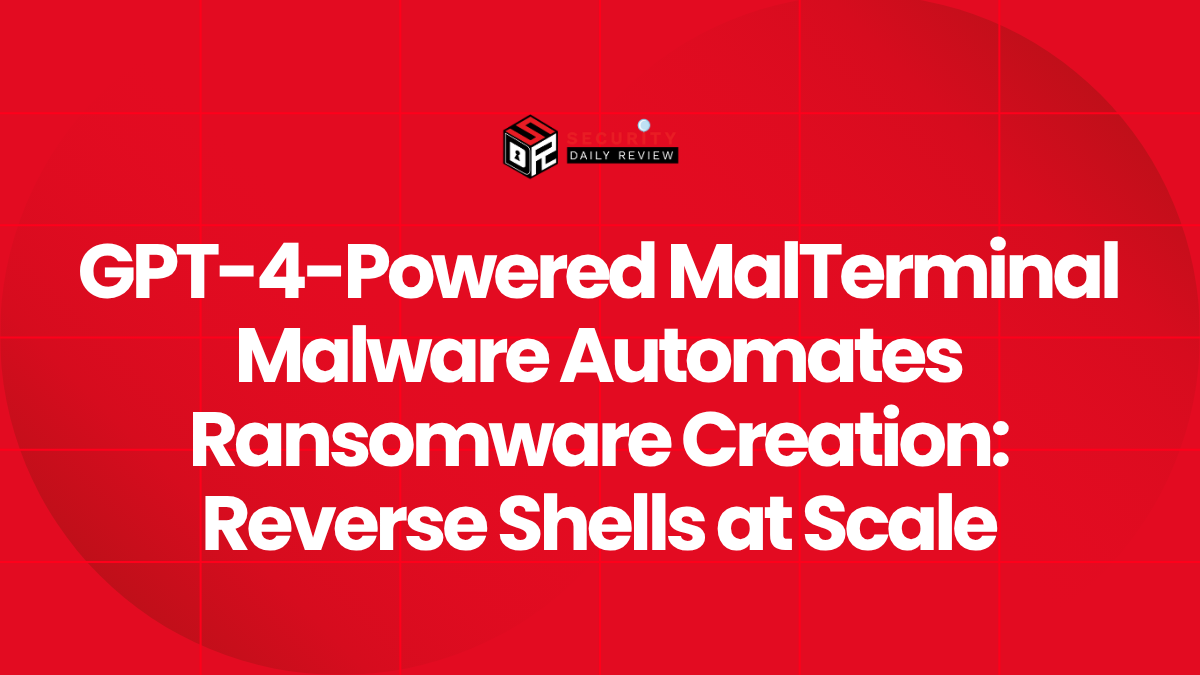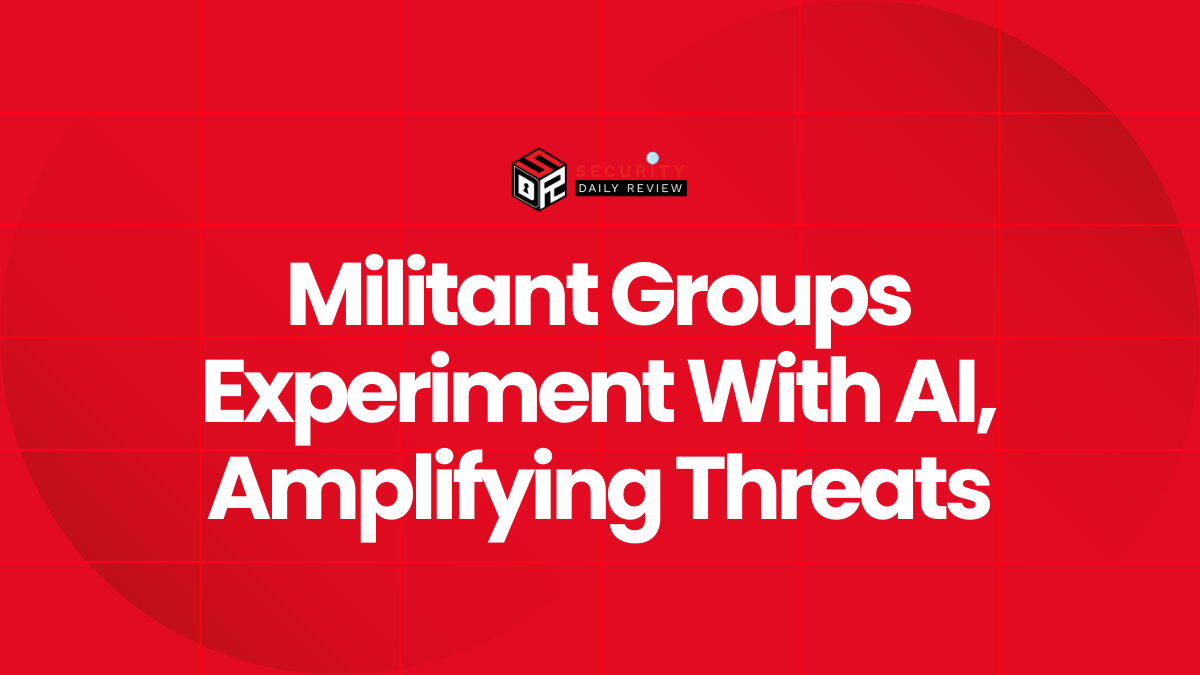The discovery of MalTerminal, a next-generation malware that leverages OpenAI’s GPT-4 to autonomously generate ransomware and reverse shells, highlights a pivotal shift in the threat landscape. Developed as a proof-of-concept, MalTerminal operates not as traditional malware with precompiled malicious code, but as a dynamic “malware generator” capable of producing unique and operational payloads on the fly.
According to SentinelLabs researchers, who first uncovered the malware, MalTerminal signifies the first known real-world use of large language models (LLMs) directly embedded within malware to power runtime code generation. This method substantially complicates traditional detection techniques by generating fresh payloads on each execution, effectively disabling signature-based defenses.
MalTerminal Uses GPT-4 to Dynamically Generate Malware at Runtime
Unlike prior malware families, MalTerminal does not carry static payloads within its binary.
Instead, it embeds a direct connection to OpenAI’s GPT-4 chat completions API—an endpoint deprecated in November 2023. This API is invoked during execution to generate either a ransomware routine or a reverse shell, depending on the operator’s selected mode. The malware functions by issuing a structured JSON prompt to GPT-4, instructing it to assume the role of a cybersecurity expert and generate the relevant tools.
MalTerminal’s Capabilities Go Beyond Traditional Malware Archetypes
The malware provides attackers with the ability to:
- Choose between “ransomware” or “reverse shell” generation upon launch
- Generate unique Python code on demand through GPT-4 prompts
- Dynamically execute returned payloads in memory to avoid disk-based detection
- Leverage AES encryption in CBC mode and recursively enumerate files (for ransomware mode)
- Upload encrypted data archives through HTTP POST requests
This approach is reminiscent of academic PoC (proof-of-concept) tools like PromptLock, but MalTerminal appears to bridge the gap between research and practical red-teaming utilities. While no evidence currently exists of in-the-wild deployment, MalTerminal’s existence emphasizes the viability of large-scale GPT-4 malware automation.
Detection is Challenging, but not Impossible
Despite the sophistication of runtime GPT-4 malware generation, MalTerminal suffers from inherent limitations.
Because it relies on hardcoded API keys and static prompt structures, security researchers were able to reverse-engineer artifacts using a combination of deterministic and behavioral analysis techniques. SentinelLabs introduced a two-pronged defensive strategy to address such threats:
- API Key-Based Detection :
Leveraging YARA rules, researchers searched for API key structures using recognizable provider-specific prefixes. This method uncovered over 7,000 samples containing more than 6,000 unique LLM API keys.
- Prompt and Behavior Hunting :
By extracting JSON payloads sent to the GPT-4 API and analyzing their structure, analysts were able to identify fingerprintable patterns. These include static role definitions (“you are a cybersecurity expert”) and code segments instructing LLMs to build functions for encryption, file traversal, or network exfiltration.
Additionally, lightweight classifiers that interpret prompt content help triage suspicious binaries. Pairing these classifiers with intelligent behavioral analytics offers a scalable response to LLM-driven malware threats.
Red Team Tools and Dual-Use Implications Surface
Researchers also discovered FalconShield—a defensive LLM utility capable of scanning Python files and requesting GPT-4 to write threat intelligence reports based on detected patterns. While framed as a defensive resource, FalconShield shares nearly identical architecture to its offensive counterpart, emphasizing the dual-use problem associated with generative AI in cybersecurity operations.
Multiple Python scripts aligned with MalTerminal.exe’s functionality were analyzed. Like the binary, these scripts invoked GPT-4 and offered the end-user a prompt to select the desired attack type. The similarity across these platforms underlines the increasing accessibility of weaponized LLMs by both state actors and criminal groups.
Early LLM-Based Cyberthreat, Narrow Window
MalTerminal may be the earliest confirmed sample of LLM-driven malware discovered to date.
The inclusion of a chat completions endpoint deprecated in late 2023—alongside unreleased prompt artifacts—supports a timestamp for development dating to early 2023 or before. Yet all analyzed instances of MalTerminal remain within controlled environments or red-team repositories. There is presently no indication of distribution campaigns, monetization strategies, or active compromises linked to this tool.
That said, defenders have only a narrow opportunity to prepare. Reliance on commercial GPT-4 APIs introduces detection opportunities that could vanish should attackers pivot to self-hosted models or bespoke inference APIs. As adversaries iterate, so must defenders—particularly by investing in LLM telemetry, monitoring prompt-to-payload flows, and isolating runtime code issuance events.
AI-Powered Malware Requires AI-Aware Defenses
The discovery of MalTerminal marks a turning point in the evolution of ransomware and reverse shell deployment.
By embedding GPT-4 functionality natively and dynamically calling for malicious code generation, MalTerminal automates a process once requiring significant manual developer involvement. For CISOs and security teams, the key takeaways are:
- LLM-driven payloads defy conventional static malware detection methods.
- Prompt structures and hardcoded API keys offer the most immediate signals for detection.
- Reverse shell and ransomware tools can now be generated in memory, leaving minimal disk-based artifacts.
- Prompt hunting and lightweight LLM classifiers will be indispensable tools in next-gen malware defense strategies.
As the first truly autonomous GPT-4 malware toolkit, MalTerminal does not just represent a technical breakthrough—it serves as a warning. The fusion of generative AI with offensive tooling presents an evolving threat surface that demands proactive, AI-conscious defense planning.









